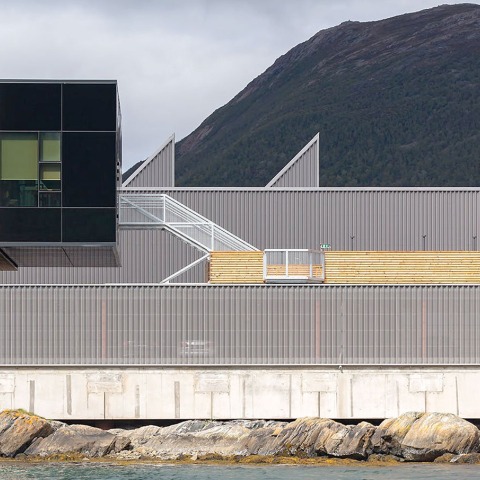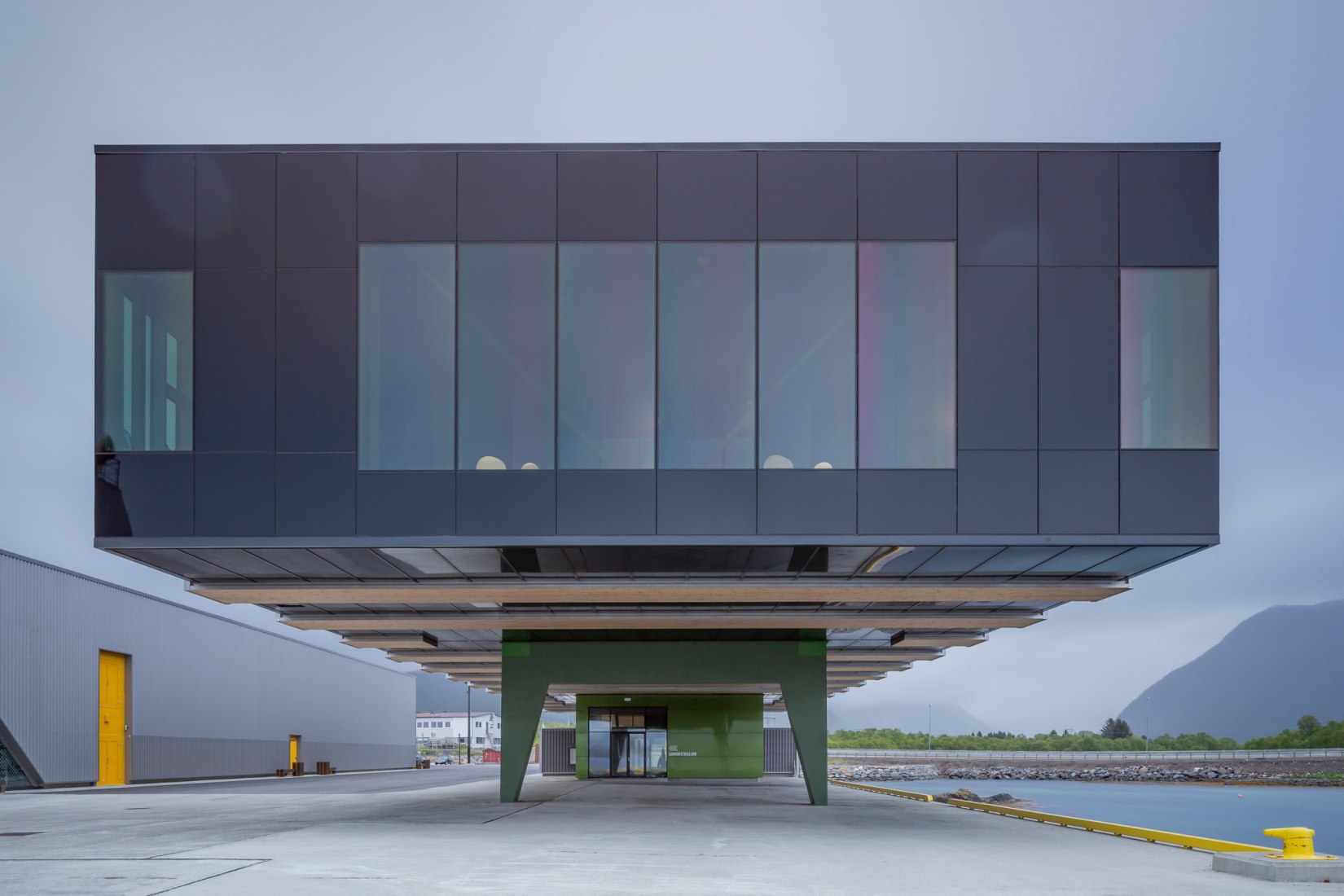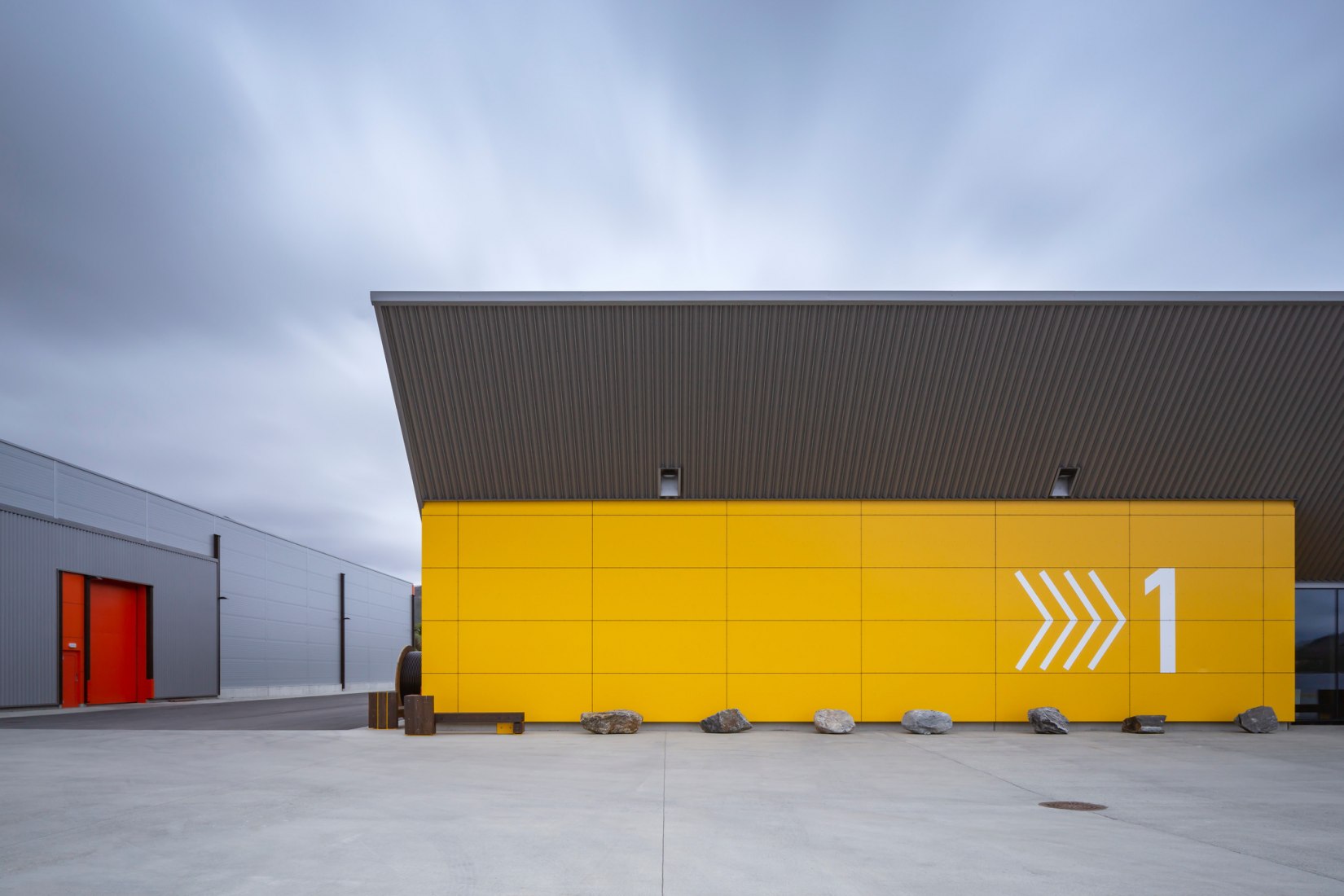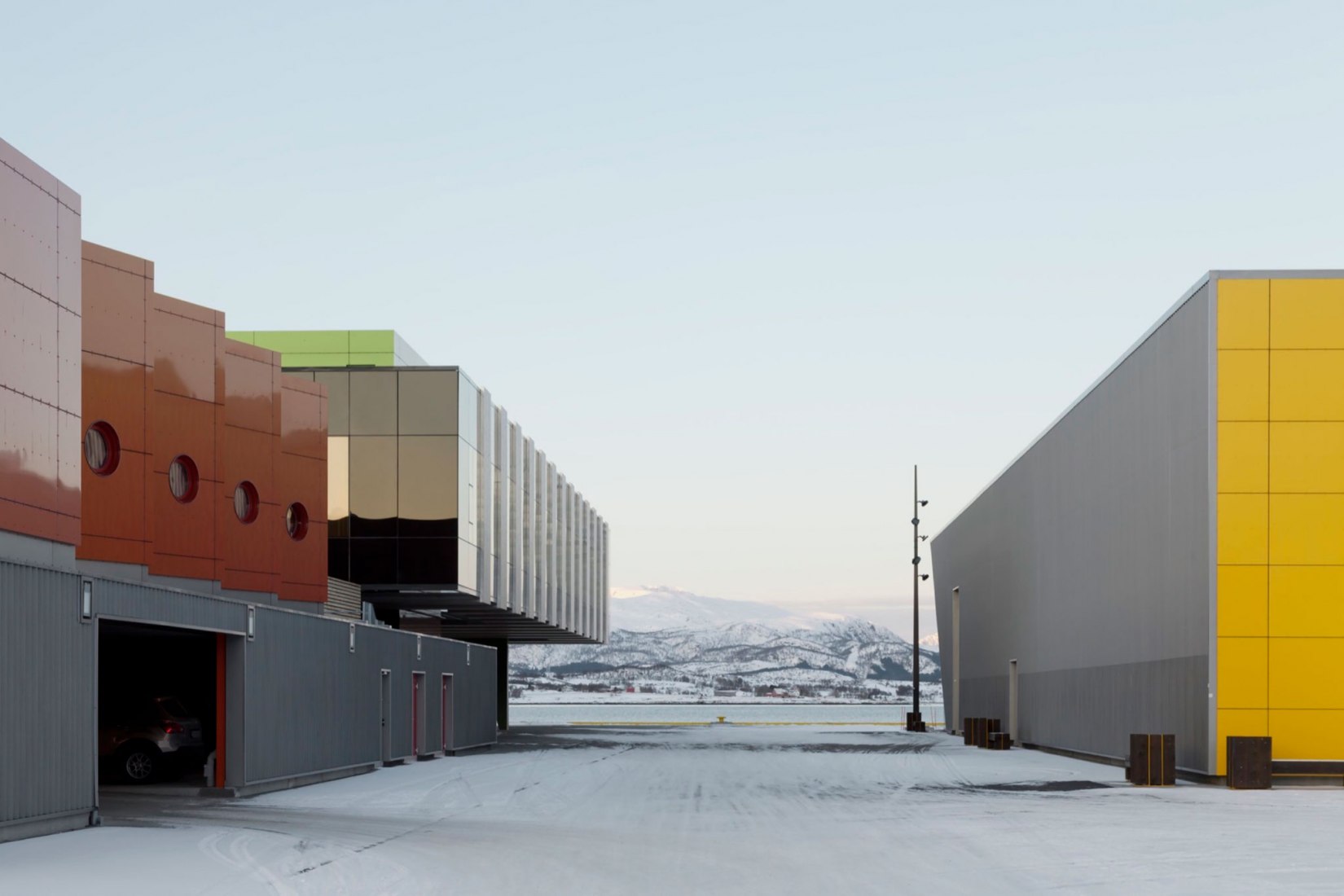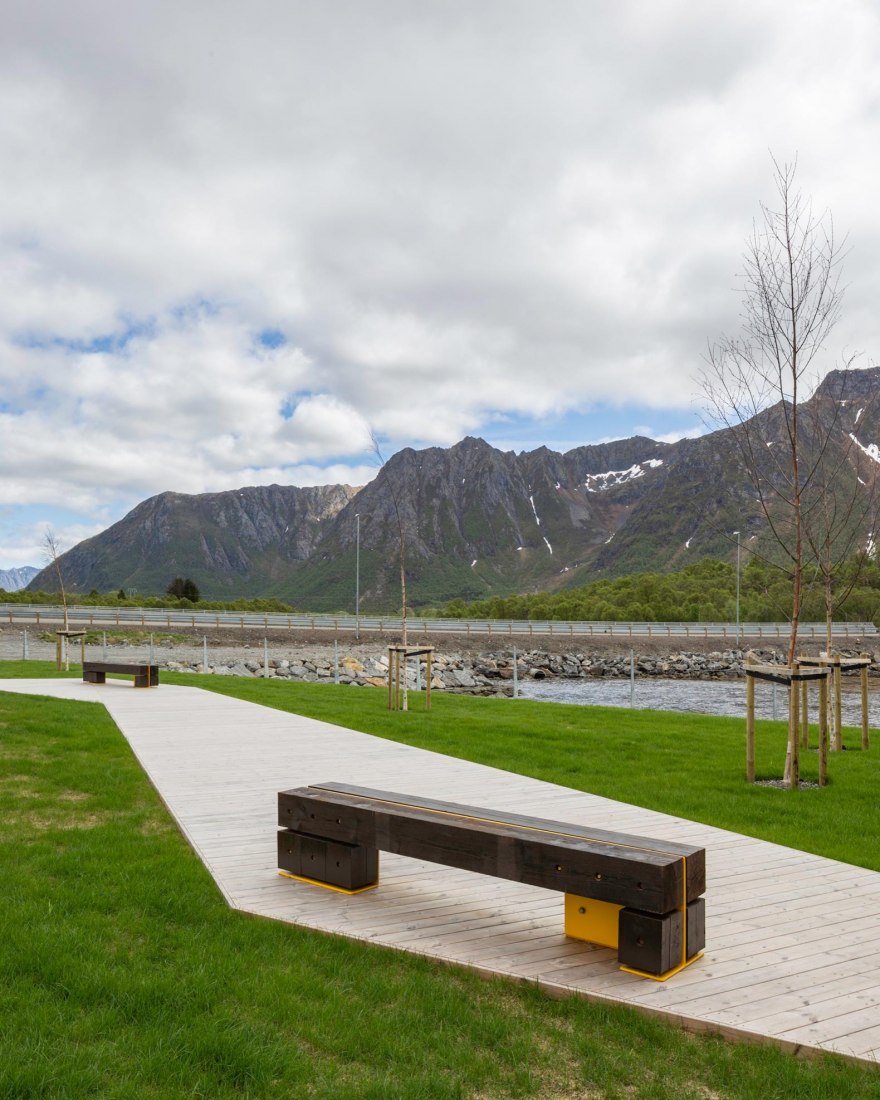With four distinctive buildings and a guest house for mid-shift breaks, the new Holmen Industrial Area is able to combine fish farming and processing functions with the company's corporate headquarters. While the warm colors of the building help make for a playful facility, the functional materials such as aluminum façade cladding and concrete floors safeguard for durability.
Description of project by Snøhetta
On behalf of shipowner Holmøy Maritime, Snøhetta has designed Holmen Industrial Area, a highly sophisticated and colorful 6,000 square meter fishing facility situated on the eastern side of Sortlandssundet in the archipelago of Vesterålen in Northern Norway. By assembling all employees and top-notch facilities on the same site, this bold new facility ensures the regions continued international success within Norway’s second largest industry – an industry worth over one billion dollars annually.
The new facility intelligently blurs the distinction between the rawness of the fishing industry with a more polished corporate allure by subtly merging Holmøy Maritime’s trawling, fish farming and fish processing business and the company’s headquarters into four, distinctive buildings. The buildings also include a guest house that functions as a home away from home for employees that need to rest their eyes between shifts at sea or on land.
Oriented toward a first-class 126-meter-wide deep-water harbor plunging into the Norwegian Sea, the buildings are all organized and dimensioned to facilitate for activities at sea and on the mainland while also safeguarding and respecting the surrounding pristine North Norwegian landscape.
With its typical coastal climate, mild winters and cool summers, the islands of Vesterålen is home to a little over 32,000 inhabitants. The area has been a beacon of the Norwegian fishing industry for almost 1,000 years, and the region is famous for its highly nutritious ocean currents and its booming fauna and flora boosted by the Gulfstream which runs closer to the coastline here than anywhere else in the world.
Nature in the area is characterized by the rough ocean, sheer mountains and rainy skies that tend to hide the endless midnight sun in summertime.
From December to the beginning of January, Vesterålen is plunged in a distinctive blue darkness, only to be lit by occasional northern lights.
Snøhetta has conducted an extensive mapping of the complex logistics required to ensure that the quality of the fish meets the highest standards before being exported to the millions of people around the globe that consume Norwegian fish every day.
Warm colors ranging from red, subdued orange, yellow and green create a playful contrast to the sky, ocean and mountains of Vesterålen and distinguish themselves to the otherwise subdued metallic grey color and materiality of the facility and subtle wayfinding elements both on the inside and outside of the facility.
By creating an open space with large windows, the facility allows for a maximum of daylight to penetrate the building while also providing beautiful views overlooking the sea. The design also reduces the need for artificial lighting and heating, contributing to a better indoor climate and a more sustainable building.
The bright color palette is also translated into the interior design – from the construction itself to interior elements. The colors create a warm atmosphere contrasting with the light ash and birch woodwork of the ceiling battens, wall panels, flooring and fixed and loose furnishings, and add a touch of playfulness to the breathtaking views of the shifting and dramatic scenery outside.
